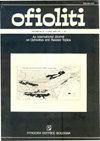观测的规模能掩盖地体变形史的复杂性吗?IVREA带巴尔穆西亚橄榄岩地块实例(意大利西北部)
IF 1.3
4区 地球科学
Q2 GEOLOGY
引用次数: 0
摘要
观测规模。在这里,我们报告了Balmuccia橄榄岩地块的一个案例,在该地块,对Websterite岩脉的微观结构观察表明,它们记录了两阶段的变形历史。在橄榄岩主岩中测得的晶格优选取向(LPO)表明,最古老的变形以左旋简单剪切为特征,而最年轻的变形以纯剪切流动为特征。然而,在露头尺度上,褶皱、拉伸和褶皱然后拉伸的堤坝的分布遵循与纯剪切所适应的大应变一致的模式。另一方面,不均匀的岩墙分布提供了更复杂演化的唯一迹象,这被推断为继承自较老的变形事件。为了在最后一次变形事件之前确定堤坝的方向,提出了一种向后恢复方法。结合微观和细观结构观测,评估了第一次变形事件的流动平面和第二次变形事件应变椭圆的相对方向。这种方法确定了巴尔穆西亚橄榄岩的两阶段演化。这种局部演化使人们能够对晚古生代构造进行更广泛的推测。Balmuccia地块在以左旋简单剪切为特征的流动状态下变形,可能是在晚华力西期岩石圈规模的伸展事件期间,被同向运动的铝辉石二石侵入。随着伸展的继续,在早二叠世,该地块被几乎纯的剪切流变形,大规模的水平伸展可能会将巴尔穆西亚地块带到较低的地壳深度。本文章由计算机程序翻译,如有差异,请以英文原文为准。
CAN THE SCALE OF OBSERVATION HIDE COMPLEXITIES IN THE DEFORMATION HISTORY OF A TERRANE? AN EXAMPLE FROM THE BALMUCCIA PERIDOTITE MASSIF, IVREA ZONE (NW ITALY)
scale of observation. Here we report a case from the Balmuccia peridotite massif, where microstructural observations on the websteritic dykes reveal that they recorded a two-stage deformation history. Lattice Preferred Orientations (LPO) measured in the peridotitic host rock indicate that the oldest deformation was characterized by sinistral simple shear while the youngest by pure shear flow regimes. However, the distribution of folded, stretched and folded-then-stretched dykes at the outcrop scale follows a pattern concordant with large strain accommodated by pure shear only. On the other hand, the only indication of a more complex evolution is provided by the uneven dyke distribution, which is inferred to be inherited from an older deformation event. In order to define the orientation of the dykes prior to the last deformation event, a backward restoration is presented. Integrating micro- and meso-structural observations, the relative orientation of the flow plane for the first deformation event and the strain ellipse for the second has been assessed. This approach resulted in the determination of a two-stage evolution for the Balmuccia peridotite. This local evolution allows discussing wider speculations on the late Paleozoic tectonics. The Balmuccia massif, while being deformed in a flow regime characterized by sinistral simple shear, presumably during a late-Variscan lithospheric-scale extensional event, was intruded by synkinematic Al-augite websterites. As extension continued, in the Early Permian, the massif was deformed by nearly pure shear flow and large horizontal stretching could bring the Balmuccia massif to lower crustal depths.
求助全文
通过发布文献求助,成功后即可免费获取论文全文。
去求助
来源期刊

Ofioliti
地学-地质学
CiteScore
2.40
自引率
7.70%
发文量
1
期刊介绍:
Since 1976, Ofioliti provides an international forum for original contributions and reviews in the field of the geodynamics, petrology, geochemistry, biostratigraphy, stratigraphy, tectonics and paleogeography applied to ophiolitic terrains and modern oceanic lithosphere, including their sedimentary cover. Studies of topics such as geodynamics of the mantle, the evolution of orogens including ophiolites and paleoceanography are also welcome
 求助内容:
求助内容: 应助结果提醒方式:
应助结果提醒方式:


